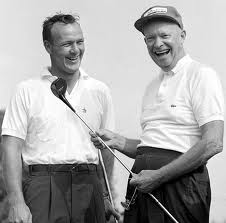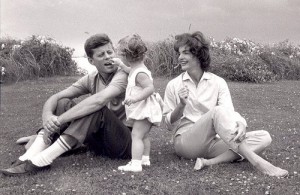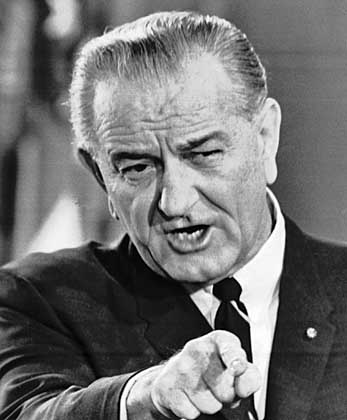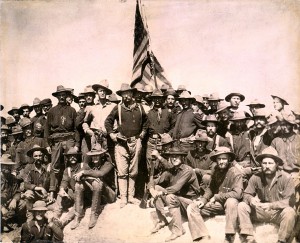By Charlotte Heroux
The aftermath of World War II defined a new era for not only the United States, but also for the world. The world powers had shifted and the once strong European governments were suffering immense economic and industrial troubles from fighting the war on their own soil. One of these countries was France, who emerged from World War II with a series of problems. The United States Secretary of State George Marshall spoke at Harvard University in June 1947 and called for “an ambitious program to aid Europe to stabilize and ameliorate the situation there, in the interests of the Europeans and the world…the Europeans must cooperate with America and among themselves.” [1]
This aid ultimately came in the form of what is known as the Marshall Plan, which planned to give about 13 billion dollars in aid to European economies, both dollars and goods. One European country that was to receive a significant amount of aid was France, which is where Pierre Heroux served as a French interpreter in Villefrance, France while serving in the Navy, and experienced first hand accounts of post World War II France and how it was affected by the Marshall Plan.
Heroux recalls, “I joined the Navy immediately after high school in July 1954. At the time, military service was mandatory for all males. Since I did not wish to join the Army, but rather see the world, I volunteered for the Navy.” [2] But while Heroux was still in high school, the Marshall Plan was taking effect in Europe.
 The aid to France began in April 1948, and marked a significant change for the lives of Europeans. The picture published in the New York Times in January of 1949 displays “a ceremony that was held on the pier as the Liberty ship John S. Quick reached Bordeaux last May with a load of 8,000 tons of wheat shipped from the United States. The vessel was placarded ‘The First Ship of the Marshall Plan’ and was greeted in an impressive manner by French officials and citizens while the passengers lined her rail.” [3] This symbolizes the adjusting attitudes towards the United States in European countries, and what was to come in the ongoing and future battle against communism. Over the next couple of years, the aid continued to France, and continued to improve the lives of French citizens and the economy. By December 1950, “France…is a dramatic illustration of how the pump-priming of Marshall plan money – in combination with the will, work, and ingenuity of the people – put one country back on its feet economically. France is not only recovered. It is thriving.” [4]. In only two years, France was once again a fully functioning European economy and society, and was now prepared to take on the challenges of post World War II involving the containment of communism. In 1948 when the United States rolled out the Marshall Plan, “…the Kremlin announced the Molotov Plan, named for Marshall’s Soviet counterpart and intended to accomplish for Eastern Europe, on socialist principles, what the Marshall Plan would do, on a capitalist base, for the West.” [6] These actions escalated the division of Europe, with Germany at the center. Fear of communism expansion in the United States heightened to an all time high, and it became even more important for relationships to be solidified between the United States and Western Europe.
The aid to France began in April 1948, and marked a significant change for the lives of Europeans. The picture published in the New York Times in January of 1949 displays “a ceremony that was held on the pier as the Liberty ship John S. Quick reached Bordeaux last May with a load of 8,000 tons of wheat shipped from the United States. The vessel was placarded ‘The First Ship of the Marshall Plan’ and was greeted in an impressive manner by French officials and citizens while the passengers lined her rail.” [3] This symbolizes the adjusting attitudes towards the United States in European countries, and what was to come in the ongoing and future battle against communism. Over the next couple of years, the aid continued to France, and continued to improve the lives of French citizens and the economy. By December 1950, “France…is a dramatic illustration of how the pump-priming of Marshall plan money – in combination with the will, work, and ingenuity of the people – put one country back on its feet economically. France is not only recovered. It is thriving.” [4]. In only two years, France was once again a fully functioning European economy and society, and was now prepared to take on the challenges of post World War II involving the containment of communism. In 1948 when the United States rolled out the Marshall Plan, “…the Kremlin announced the Molotov Plan, named for Marshall’s Soviet counterpart and intended to accomplish for Eastern Europe, on socialist principles, what the Marshall Plan would do, on a capitalist base, for the West.” [6] These actions escalated the division of Europe, with Germany at the center. Fear of communism expansion in the United States heightened to an all time high, and it became even more important for relationships to be solidified between the United States and Western Europe.
During this pivotal time, Heroux was serving active duty in the navy, and during this time of his service, he was able to experience living in France and witness first hand the effects the United States aid had on the country. “When I was there,” Heroux recalls, “the French people were appreciative of the United States role in conquering Nazi Germany. They treated American servicemen with great respect and friendship.” [6] With the growing relations of Western Europe and the United States, it became even more important to oppose the growth of communism, and the United States was at the forefront of this battle. This fight came in part as the Marshall Plan, as it helped the countries that would be on the ground potentially opposing the communist spread. This worked as a two way street, the United States helped European economies recover, so that these countries could assist the United States in combatting communism. These once demolished countries were returning to full functioning world powers, and this was something the French people did not take lightly. Heroux recalls, “while I was on shore patrol duty and interfacing with the local gendarmes (police) the sargent I was dealing with mentioned to me that if it were not for the U.S.A. aid via the Marshall Plan, the local police would not have been able to become operational in a timely fashion after the war. Such things as equipment, organizational assistance, and financial assistance in his opinion was what allowed local police forces throughout France to become functionally operational as quickly as they did.” [7] France was able to regain its status as a world power because of the help of the United States, and the United States proved that it not only was powerful enough to help other countries, but able to be of immense support to its own citizens.
The United States Navy played an instrumental role in Pierre Heroux’s life, as well as countless other men just like him. After serving his active duty as an electrician’s mate, Heroux remembers, “I was happy to return to civilian life…[and I pursued] a degree in Electrical Engineering…I returned to active reserve Navy duty after acquiring a degree. I was fortunate enough to find a position in the utility field as an electrical engineer.” [8] The Navy, as well as the Army, provided careers and life paths for men throughout the United States. It also provided life experiences these men would not have otherwise experienced, and Heroux’s case is a perfect example of this. While he helped the United States combat communism, he got to experience living in another country and numerous other unique experiences. As he recalled the most important events, he remembered, “cruising to the top of the world and crossing the Artic Circle [and] surviving two hurricanes at sea.” [9] While, these might not have been instrumental in the history of the United States, they were important life events for Heroux and the other men he served with. The United States time and time again proved its immense power not only with dealing with foreign world powers, but providing the best lives for its citizens, and it seems as though the United States power has not limits.
[1] H.W. Brands. American Dreams: The United States Since 1945. New York: Penguin Books, 2010, 38.
[2] Email interview with Pierre Heroux, March 21, 2015.
[3] “When the First Marshall Plan Shipment Arrived in France.” New York Times. 04 January 1949, 41.
[4]”Marshall Plan Has Put France Back on Its Feet, Economically.” Daily Boston Globe. 17 December 1950, 1.
[5] Brands, 39.
[6] Email interview with Pierre Heroux, March 25, 2015
[7[ Email interview with Pierre Heroux, April 23, 2015
[8] Email interview with Pierre Heroux, April 23, 2015
[9] Email interview with Pierre Heroux March 21, 2015










